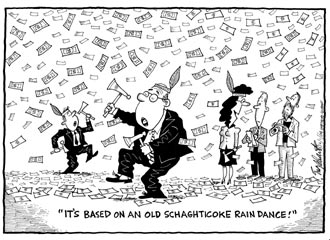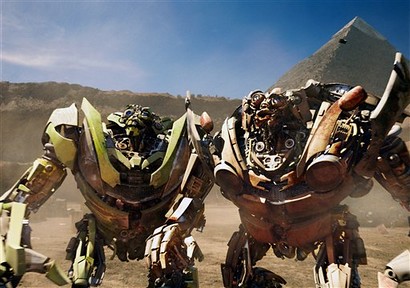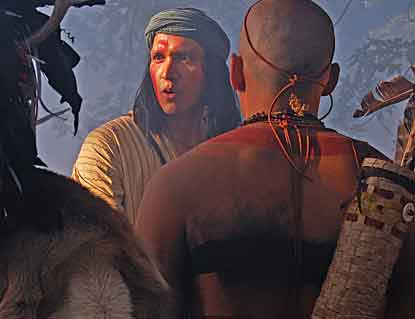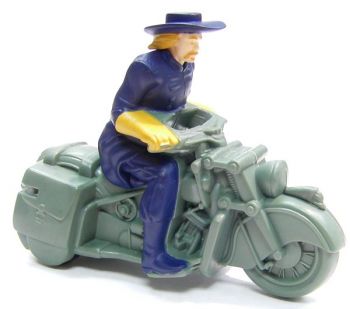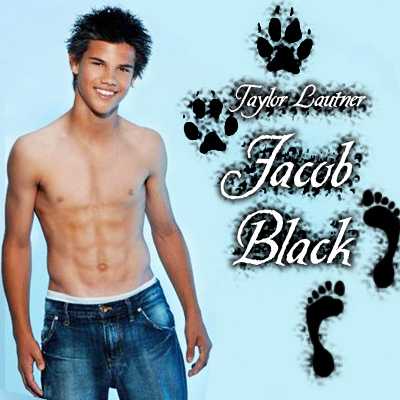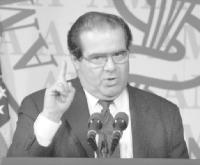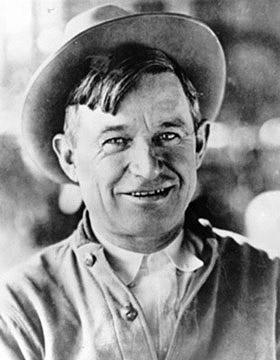In
Calif. Tribes Are "Highly Questionable"? I rebutted the main argument of Jim Marino. Now he's back with another anti-Indian screed that need rebutting.
Who Is a Native American Indian?By Jim MarinoThe basic answer to what appears to be a simple question is that an “Indian” is whoever the particular tribe says is an Indian. Now any person can claim to be part Indian, just as many say they are part Irish on St. Patrick’s Day.This is an excellent example of a
non sequitur. Tribes determine who's an Indian...true. Any person can claim to be an Indian...true, but irrelevant. It doesn't matter what people claim since, as Marino just stated, tribes determine who's an Indian.
I guess Marino is implying some sort of linkage. I.e., if anyone can claim to be an Indian and a tribe buys the claim, the tribe will make the person an Indian whether he is one or not. But the key link in this chain of "reasoning" doesn't exist. Tribes don't buy the claims of just anyone. They accept people only if they meet the tribe's strict criteria.
More and more people are laying claim to be “Indian” or part Indian often with the hope of cashing in on the huge profit distributions in per capita payments paid out to tribal members of federally acknowledged Indian tribes, bands or communities with casinos.True but irrelevant, again, since tribes determine who's an Indian. What non-Indians claim has no bearing on tribes' enrollment decisions.
Typically, there are controlling families within tribal groups who hold sway over membership issues.
There are several recognized groups of California “Indians” who have only one, two or perhaps a handful of members. So any new members admitted are often family members of existing members.Yes, that's true in some cases. So what? Before, Marino was implicitly arguing that tribes were letting in anyone who claimed to be an Indian. Now he's arguing that some tribes are too strict--letting in only family members and excluding other verifiable Indians.
Since these are two radically different arguments, which is it? Does Marino even realize that he's stupidly shifted arguments in the middle of his screed?
"Wannabe" Indians?These federal Indian policies have created no shortage of hardship and injustice to real Indians and no shortage of corruption by those “wannabe” Indians trying to scam the system now that gambling casinos are here.Which
"wannabes" are those? Marino has yet to outline a method by which a tribe that determines its own membership would accept a "wannabe" claimant. Nor has he given a single example of this happening in reality.
In case you haven't noticed, Marino is dissembling to manipulate his readers. He talks about wannabes claiming to be Indians and then leaps to wannabes actually being recognized as Indians. But he doesn't give us the slightest reason to take a leap of illogic with him.
A classic example of the potential for abuse of this federal “hands off” policy is the re-creation of a tribe calling itself the Mashantucket Pequote tribe. The founder, “Skip” Hayward, was able to trace a 1/34 ancestry to an old Indian woman living on an abandoned Pequote reservation near Ledyard, Conn. Jeff Benedict recounts the incredible story of how Hayward parlayed that connection into the billion dollar-a-year casino called Foxwoods, in his expose book titled “Without Reservation” (HarperCollins 2000).It's "Pequot," not "Pequote," dummy. And ancestry is calculated by powers of two (1/2, 1/4, 1/8, 1/16, etc.) There's no such thing as having 1/34th ancestry.
So much for the accuracy of Marino's research.
I haven't read
Without Reservation, but I can rebut some of Marino's arguments. The Mashantucket Pequot case wasn't an example of a tribe recognizing wannabes, since the tribe itself wasn't recognized. If Skip Hayward and his people were wannabes, they were
recognized by an act of Congress signed by President Reagan. They proved themselves to our elected officials.
If you don't like what Congress and the president did, pay more attention the next time you vote. But don't waste our time questioning the democratic process. We elected those people to make decisions for us. If you didn't like their decisions, you should've elected someone else rather than whine about the results.
To reiterate, the Pequots were recognized through an act of Congress, a legitimate means of recognition. They played by the rules and were recognized by the rules. So what's the problem?
More to the point, their case is only one example. It doesn't tell anything about the other 560-plus tribes nationwide, including the 100-plus in California. It's basically irrelevant.
Require 1/2 blood quantum?Perhaps it is too simple a solution, but if one is more than 50 percent of a non-Indian ancestry, then they are not Indian for any legal purpose. After all, if one were 7/8ths German and 1/8th Arapaho it hardly seems like you would be “Indian.”Finally, Marino makes it clear how profoundly ignorant he is.
One, tribes have always adopted people of other races and made them Indians.
John Ross the "Cherokee Moses" is an excellent example of that. Two, tribal membership is a political decision, not a racial one--as
the Supreme Court has ruled. If a tribe chooses to enroll someone who's only 1/8th Indian by "blood," it's the tribe's right.
It is a graphic example of how federal Indian policy is so easily manipulated by outside, non-Indian gambling investors seeking to spread casino gambling beyond Nevada and Atlantic City by using the Indian Gaming and Regulatory Act of 1988 and so-called “Indian tribes” as a front.Again, Marino is being stupid or dishonest or both. He's listed exactly one tribe that may be bogus according to his standards: the Mashantucket Pequots. He has yet to identify any other tribes with a problem.
He hasn't even described how recognition could be a problem. The US government has recognized few new tribes recently, and almost none by an act of Congress. It has recognized most of California's tribes for a century or more.
His phony "argument" is as baseless as the argument against
gay marriage. If a homosexual couple gets married, does it affect the previous 560 heterosexual marriages? No. If a tribe is wrongly recognized, does it affect the previous 560 tribal recognitions? No.
The ugliest side of this federal Indian enrollment policy is the power it puts into the hands of tribal governments and controlling families, because the fear of any disenrollment becomes a weapon to advance tribal corruption and silence members who do not agree with their government or its policies.The ugliest side of Marino's anti-Indian screed is how he keeps shifting arguments and hopes nobody will notice.
Marino's main worry seems to be that tribes are enrolling too many "wannabes." But
disenrollment is about
removing members who are wannabes. How does removing enrolled wannabes increase the number of enrolled wannabes?!
Even if a tribe disenrolls legitimate members, it doesn't help Marino's argument. Regardless of why members get disenrolled, the tribe becomes smaller, not bigger. This contradicts Marino's claim that tribes are trying to enlarge themselves to get more "welfare and grant monies provided to Indian groups."
Duhhh.
The Pechanga caseOne such vivid example here in California occurred at the Pechanga tribe, another massive and profitable gambling casino between Riverside and San Diego. Once boasting about 900 members, in one fell swoop, tribal Chairman Mark Macarro disenrolled an entire extended family, the Gomez family, in a move commonly recognized as an effort to fatten the profits for the remaining members and families.First, let's get the facts straight. Macarro didn't disenroll people, the tribe and its enrollment committee did. I believe the tribe as a whole ratified the decision. If it didn't vote directly on the disenrollment action, it voted indirectly by reelecting Macarro several times.
The only legitimate conclusion is that most Pechanga Indians support the disenrollment action. If they didn't, they'd vote to reverse the decision, or elect someone to reverse it. That they haven't done this signifies their approval.
The move to disenroll people isn't "commonly recognized as an effort to fatten the profits" except by the disenrollees. The tribes doing the disenrolling uniformly say they're expelling people who aren't really Indians. Since these tribes don't open their internal decision-making to public scrutiny, no one can say which side is right.
And again, Marino is shifting arguments. Let's suppose a tribe
has disenrolled people because it's greedy. What does this have to do with tribes recognizing wannabes as Indians? Or with wannabes claiming to be and somehow becoming Indians? Answer: Nothing. Marino is talking about three or more unrelated issues and pretending they're one big problem.
Locally, the 152 enrolled members of the Chumash collect $45,000 every month in per capita distribution of gambling profits, while the 700 or so descendants of 1/8th or less ancestry get no money at all.Yes...so? Is Marino saying the Chumash tribe is somehow made up of wannabes? No. Is he saying the Chumash should give money to people of 1/8th or less Indian blood? I don't think so. But if he did say that, he'd contradict his argument that too many wannabes without enough blood are profiting from casinos.
You see? This is sheer stupidity. If a tribe keeps wannabes out, it's greedy. If it lets wannabes in, it's greedy. These two arguments are contradictory, but Marino embraces them both. Which proves he has no argument except "gaming is bad" and "Indians are bad."
Marino's real targetSince Marino writes for Santa Ynez Valley Journal, his real target is undoubtedly the Chumash. Problem is that he can't come up with a real argument against them. Is their recognition invalid? No. Have they enrolled any wannabes? No. Have they failed to enroll anyone who's a legitimate Indian? No. Have they disenrolled anyone? No.
Oops. Marino believes that some tribe somewhere has done something wrong. Something to do with recognition...enrollment...wannabes...or something like that. Apparently that means the Chumash must be guilty by association. Because all gaming tribes are corrupt and evil by definition.
I wonder what Marino thinks the Chumash should do. Enroll the people who have 1/8th or less Chumash blood? Disenroll all the present members because they're wannabes? Disband the whole tribe because it's illegitimate? All of the above? Or what, exactly?
I think Marino is jealous because the Chumash are earning a lot of money and he isn't. Well, boo-hoo, you big crybaby. If your ancestors hadn't committed acts of genocide against them, the Indians would own most of the county. They'd be earning $6,840,000 (152 x $45,000) a month by working or leasing their extensive land holdings. Either way, they're getting what they deserve.
Most of us remember the millions the tribes and their outside casino investors spent to legalize casinos in California, and their main argument was how it would get all Indians off welfare and make them self sufficient. They never mentioned “enrolled members” only.Another false argument. The tribes that passed Propositions 5 and 1A talked frequently about governing and helping themselves. In this context, "their people" referred to tribal members, not to anyone with a drop of Indian blood. If Marino was too stupid to understand
tribal sovereignty, that's his problem, not the Indians'.
And what does helping non-Indians have to do with tribes enrolling wannabes or disenrolling legitimate members? Absolutely nothing. Marino is throwing up every anti-Indian argument he can think of and hoping that one sticks.
Unless Congress or the U.S. Supreme Court does something to correct these blatant injustices created by federal Indian policies, then the question of who is and who is not Indian will always be answered, “Whoever the tribe says is Indian.”We still don't know what injustices Marino is talking about. In the Pequot case, he apparently wants the tribe disbanded. I.e., fewer Indians. In the Pechanga case, he apparently wants the tribe to reenroll the disenrollees. I.e., more Indians. In the Chumash case, he apparently wants the tribe to share its wealth with non-Indians. I.e., the same number of Indians, but earning less per person.
So we have three different "problems," none of them proved, with three different solutions. That's what I call stupid.
For more on the subject, see
The Facts About Indian Gaming.
Below: Another racist with views similar to Marino's.
